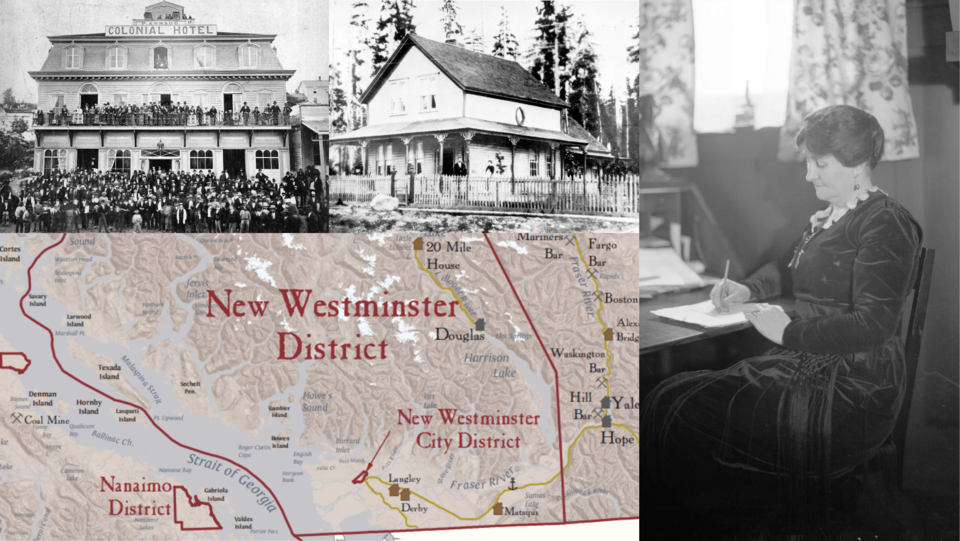B.C. is likely a fascinating place for people interested in provincial politics.
Every couple of years there seems to be something unusual or unpredictable going on. This year the collapse of BC United (formerly the BC Liberals) from vocal official opposition to a whisper in the wind is likely the most notable event, but election day is still weeks away.
To be fair, the province has seen parties fall quickly in the past; the Social Credit party dominated from 1952 to 1991 under the leadership of the Bennets (the father-son duo led B.C. for 41 years altogether). They won just seven seats in 1991 and were essentially gone by the next election.
The NDP almost followed suit, when, in 2001, they went from being in power with 39 seats to holding on to just two. But they rebounded.
Not that long ago there was the 2017 election, which saw the third-place Green Party, with just three seats out of 87 hold a surprising amount of power as no party held the majority of seats.
That's all at a provincial level, though. How does Vancouver play into this? Well, with 47 electoral districts in Metro Vancouver out of 93 in the province, the metro region will hold a lot of sway.
Historically, Vancouver has gone from an almost non-existent factor to an essential part of any campaign. So here are five facts about that.
1. New Westminster was nearly the capital of B.C.
If it weren't for William Franklyn, a man from Nanaimo, New Westminster could been named the capital of B.C., which would have drastically changed Vancouver's path.
In 1866, 20 years before the City of Vancouver was established, the Colony of B.C. (still under English rule) was being amalgamated with the Colony of Vancouver Island.
While the name of the amalgamated colony would keep the B.C. name, the capital was still being sorted out. The two major cities in the area were New Westminster and Victoria.
During Franklyn's speech promoting New West Minster given at an assembly of representatives (only about 21 people), Victoria supporter (William Cox) popped out the lenses from Franklyn's glasses and shuffled his speaking notes.
Franklyn, who may have been inebriated according to some accounts, struggled to give his speech.
The vote went 13-8 in Victoria's favour.
2. Not big enough for an MLA
It may seem impossible now, but during the first official election in B.C.'s history as a Canadian province (in 1871), Vancouver was too small to get its own riding.
Instead, it was part of the massive New Westminster District, which was basically the outskirts of New Westminster and then the entire coastline of the Mainland, from White Rock to Stewart (which is on the border with Alaska).
In fact, Vancouver would remain with New West Minster until it had its own riding in 1890.
3. Multi-member riding
While it's unheard of in Canadian politics now, B.C. used to have electoral districts represented by multiple members. They could even be from different parties.
The number of MLA's per electoral district varied; some had one while others had up to six. And it changed each election. Voters were allowed to vote as many times as there were seats.
Vancouver City, the original electoral district for the city, was given two MLAs in 1890, the first year it had any representatives; by 1928 (the last year the riding was united) there were six MLAs from the one district.
4. Mary Ellen Smith
Mary Ellen Smith made history as a provincial representative from Vancouver. She was a school teacher who became an activist in the 1880s to 1910s.
Her husband, Ralph Smith, became a politician in B.C., serving first as an MLA then as an MP and then again as an MLA in 1916. Smith was a big proponent for her husband; both supported women being allowed to vote.
In 1917 two big things happened in Smith's life. Her husband passed away and women got the right to vote.
Smith ran to replace her husband, and succeeded in a January 1918 byelection, becoming the first woman to sit in B.C.'s legislature. She would go on to be an effective politician (she was behind B.C.'s original minimum wage), although she held some racist beliefs has well.
During her time in office she became the first woman cabinet minister in the British Empire, and the first acting speaker.
5. A former Green Bay Packer was a Vancouver MLA for decades
To be fair, Emery Barnes was much more than a Green Bay Packer before politics, but football was a big part of his early adulthood. He was also a member of the Grey Cup-winning BC Lions in 1964.
He went on to become a social worker in Vancouver before launching a successful political career as an NDP MLA in the ridings of Vancouver Centre and then Vancouver-Burrard.
He was also one of the first Black MLAs in B.C.




